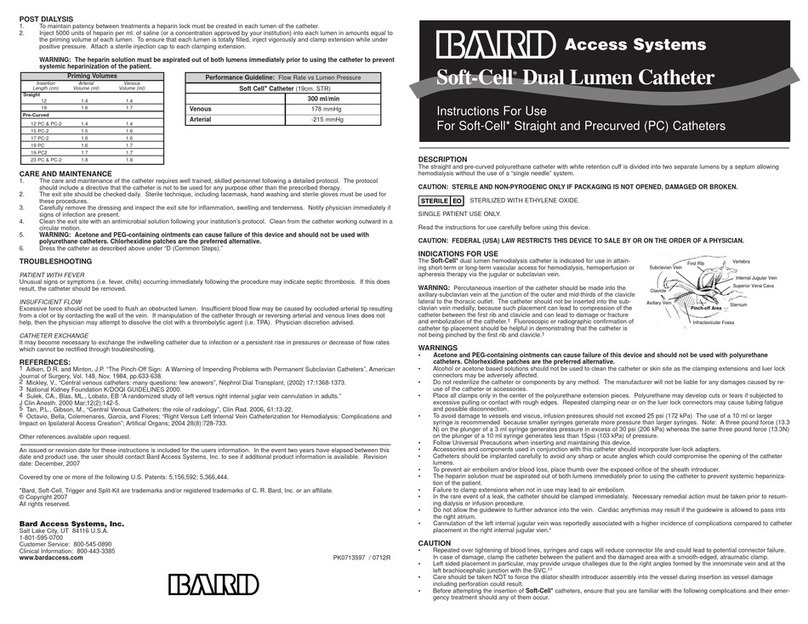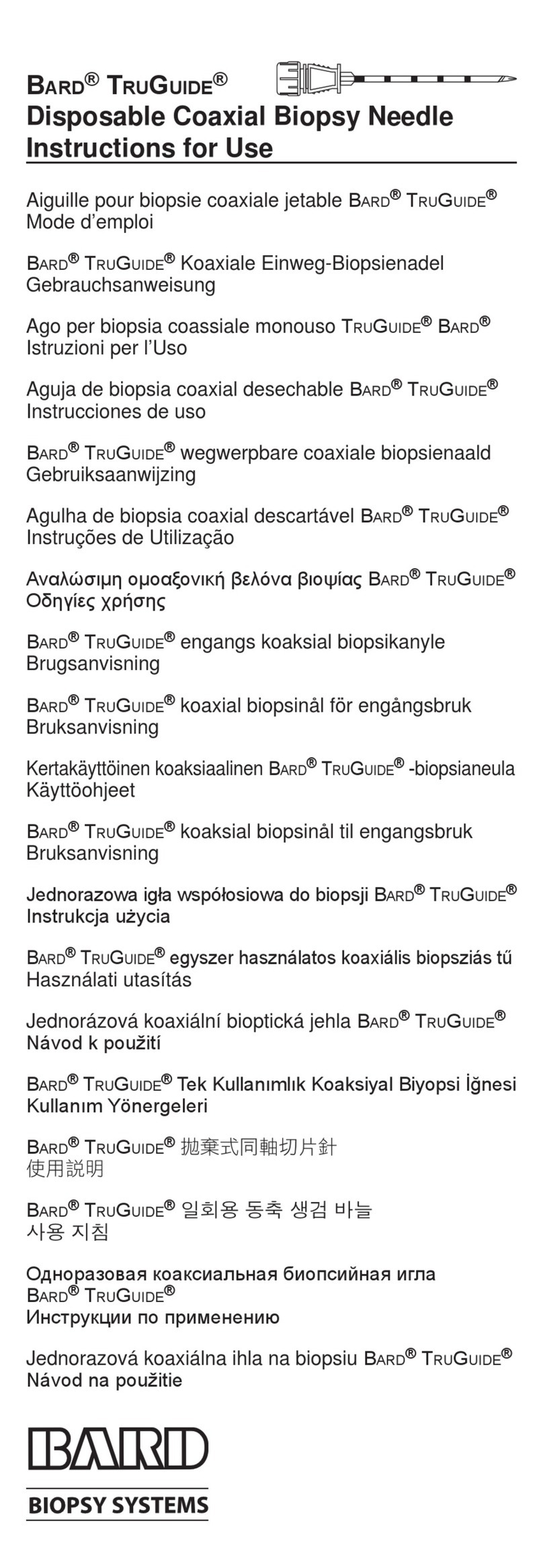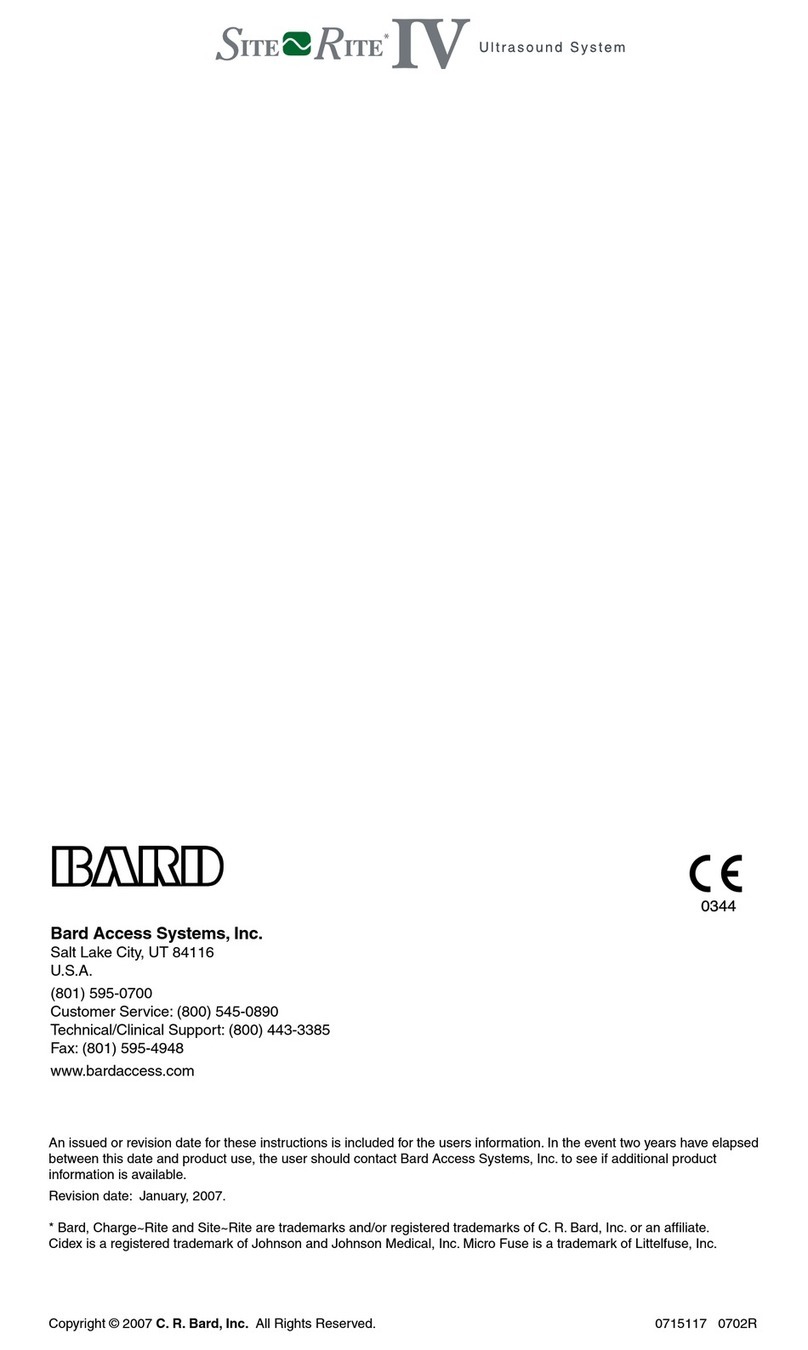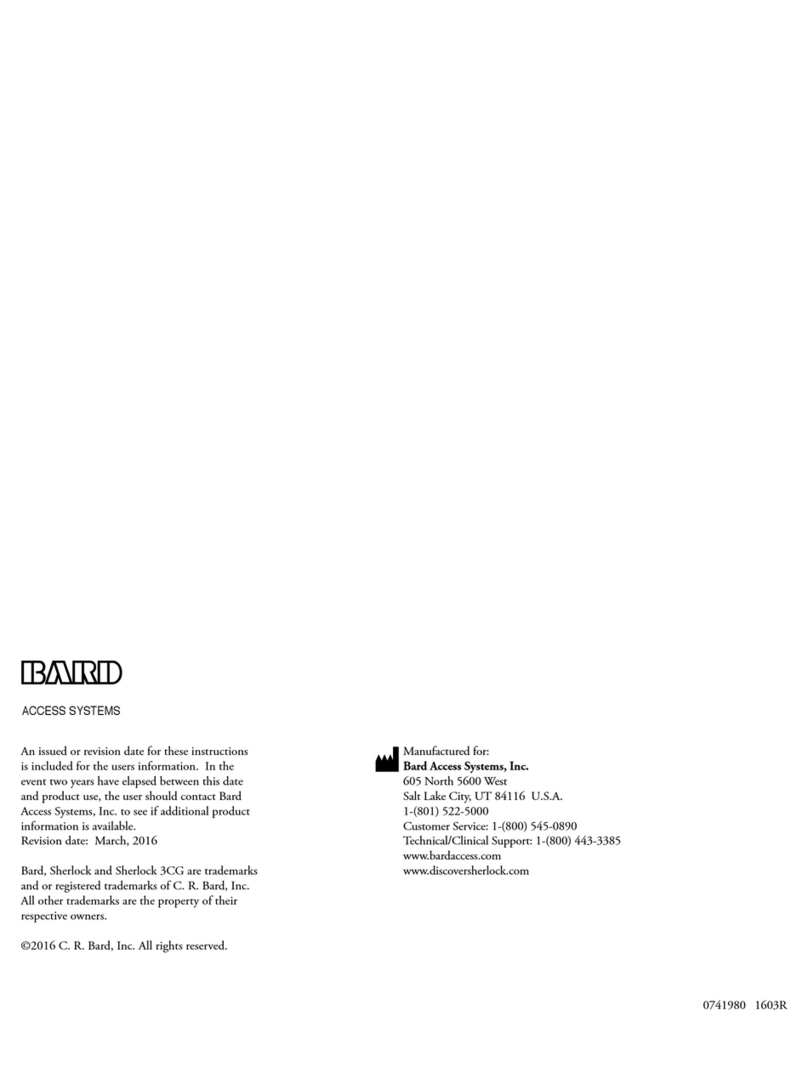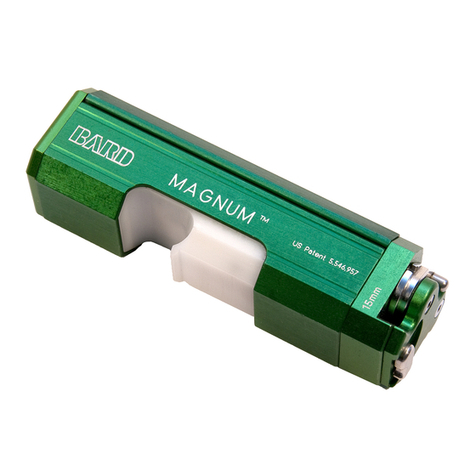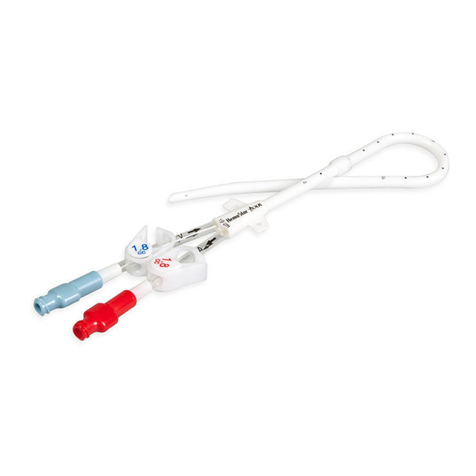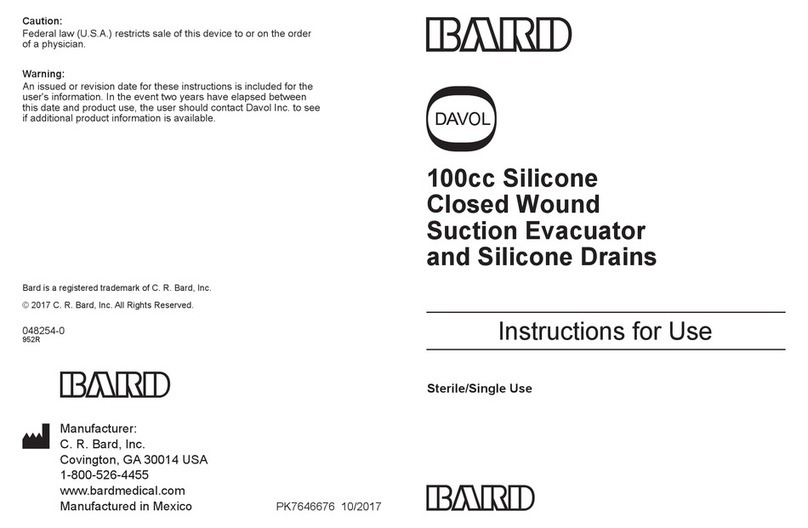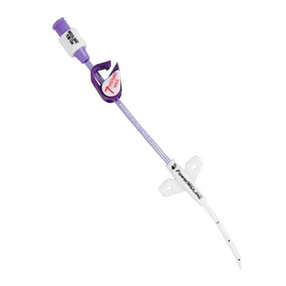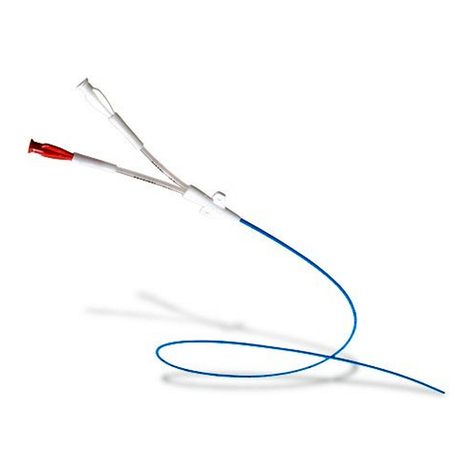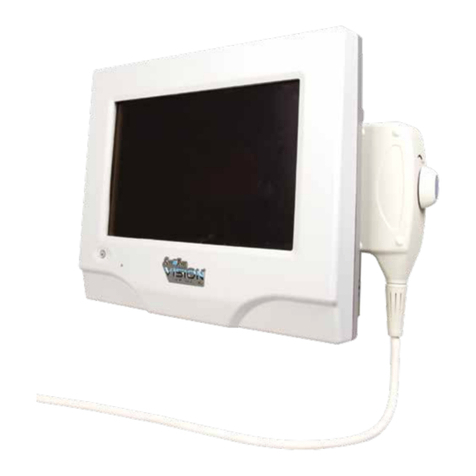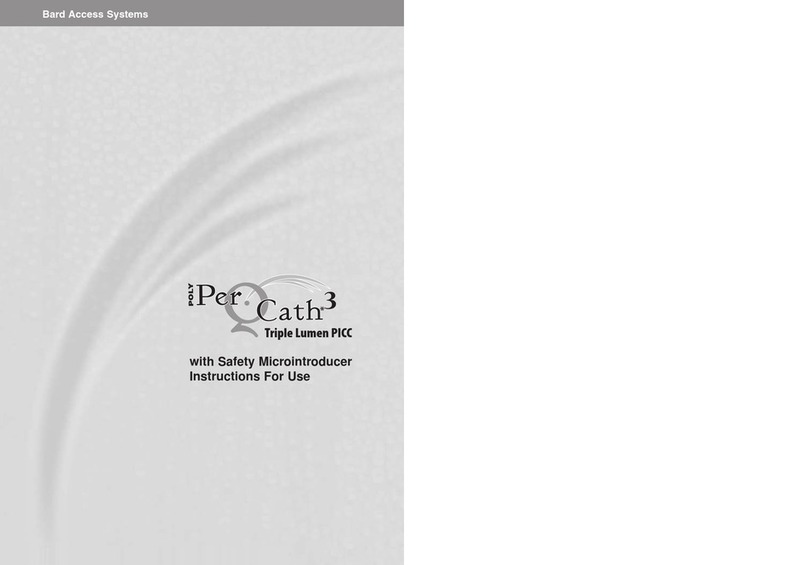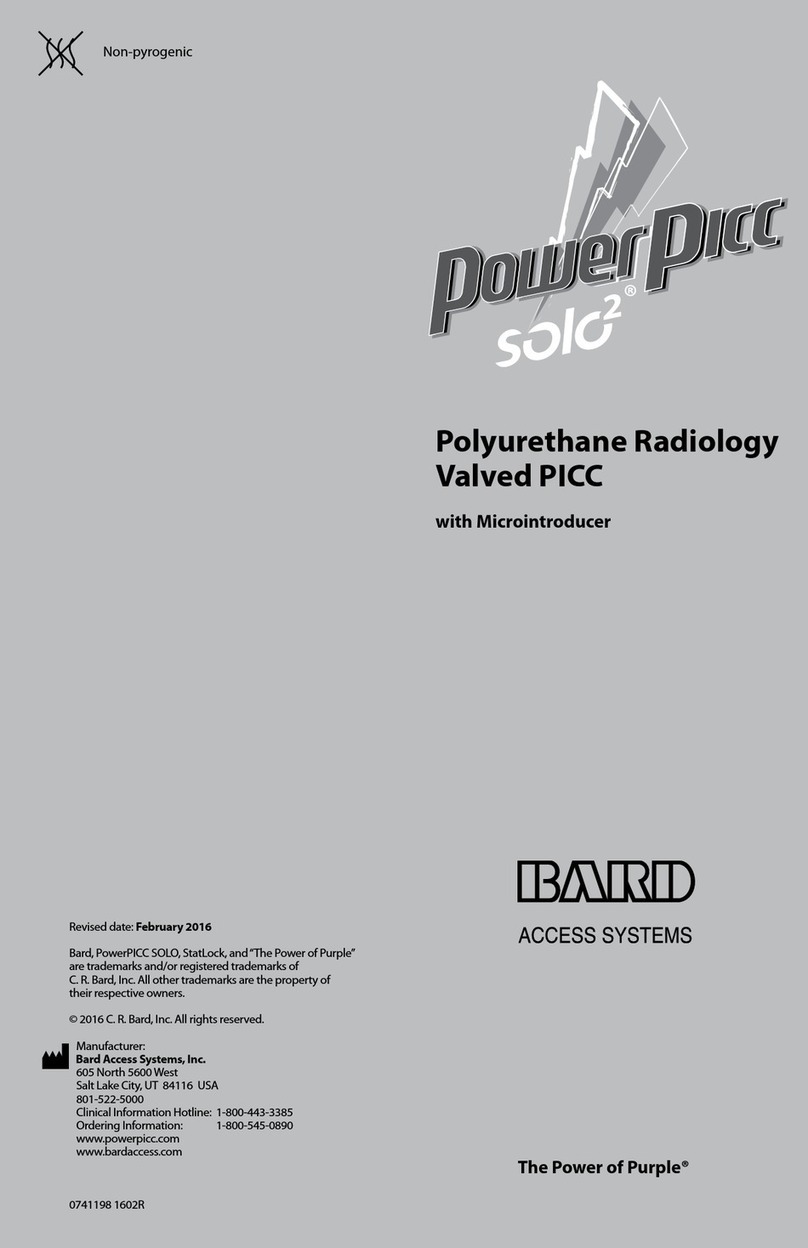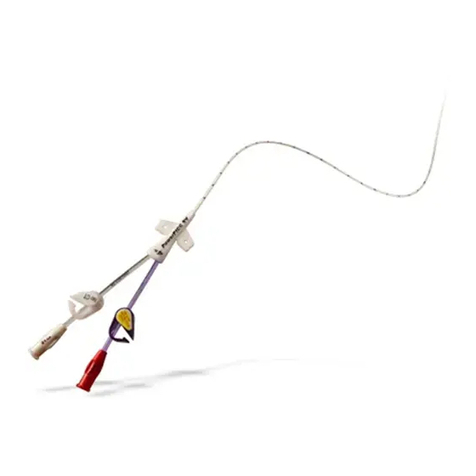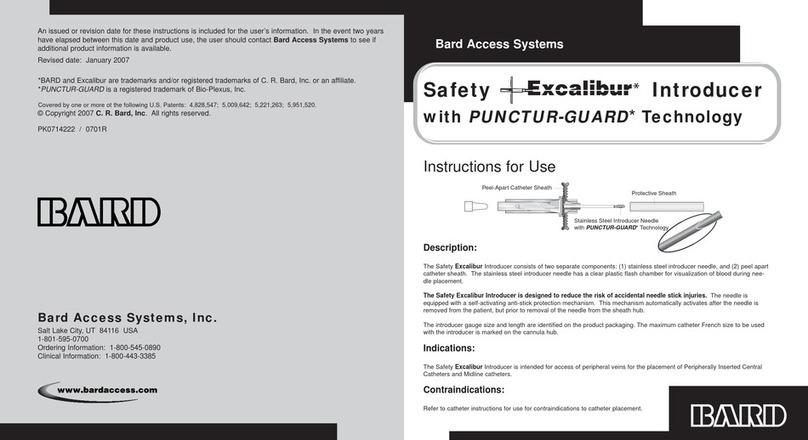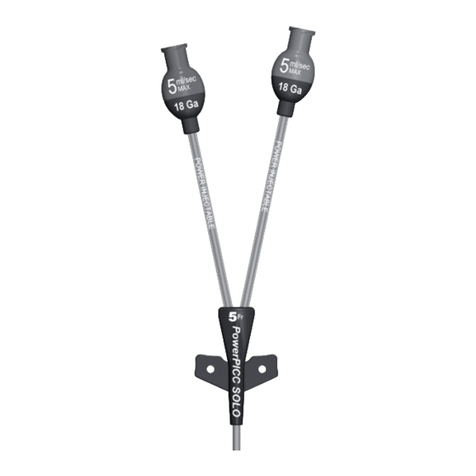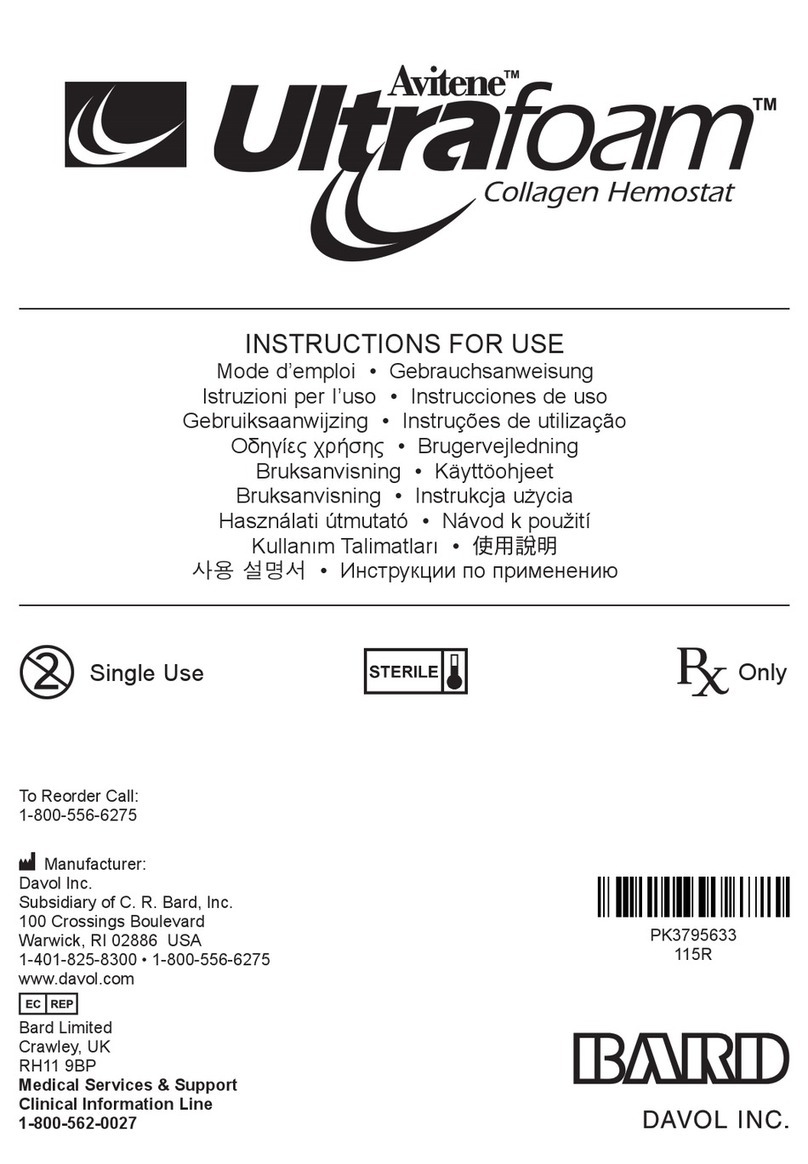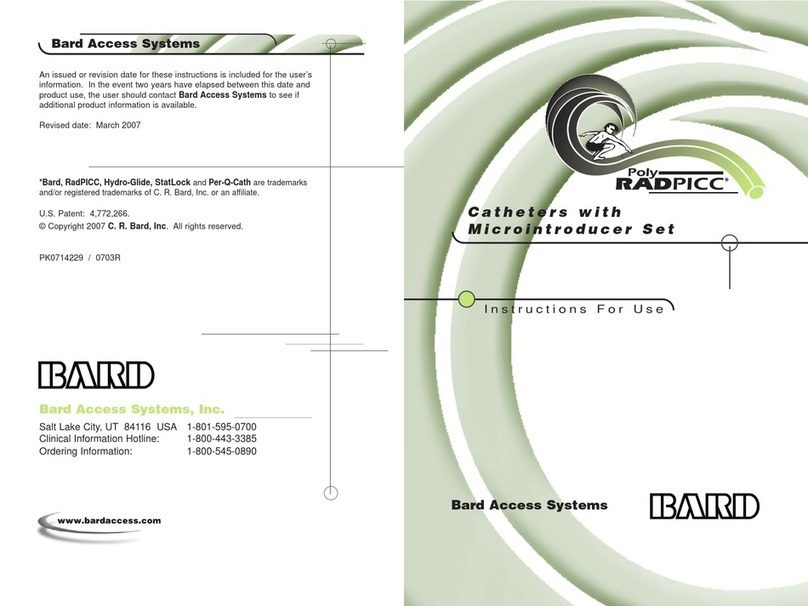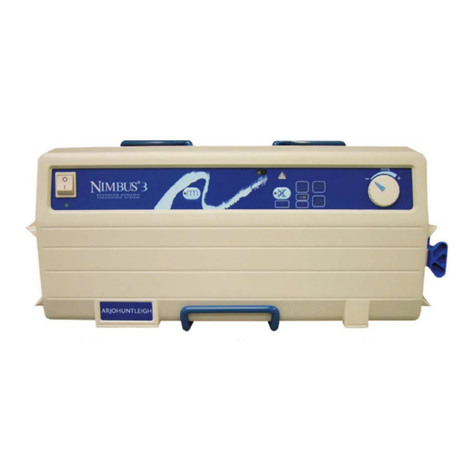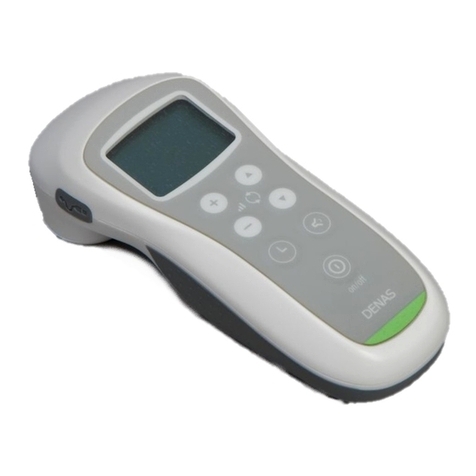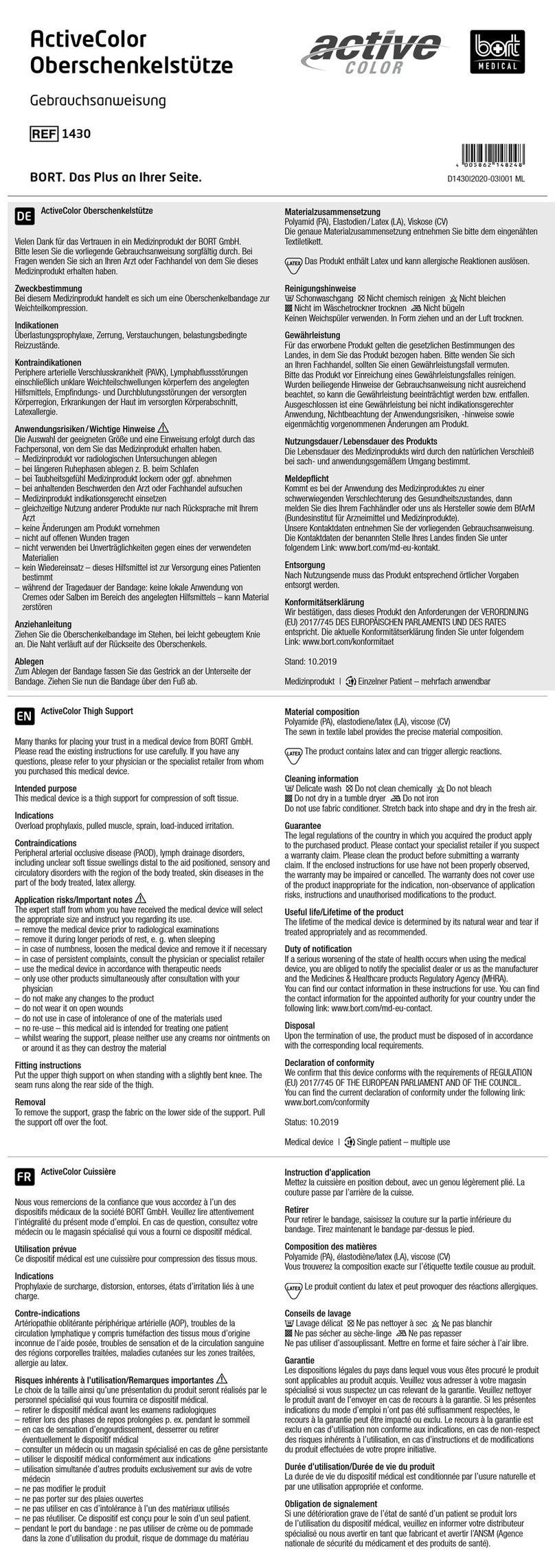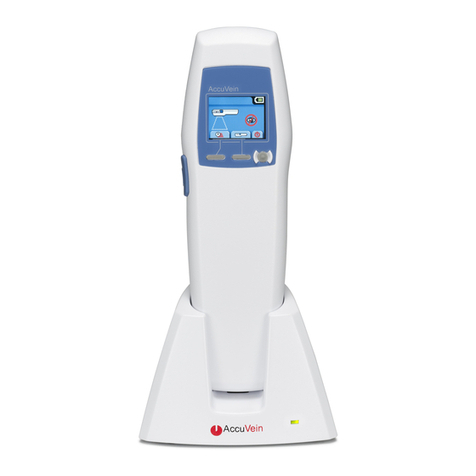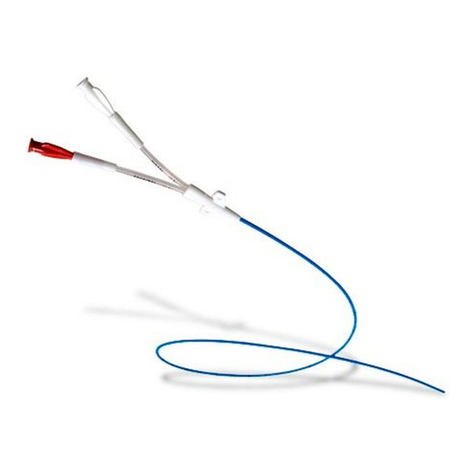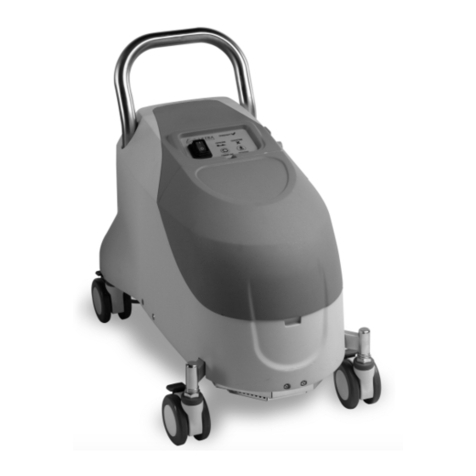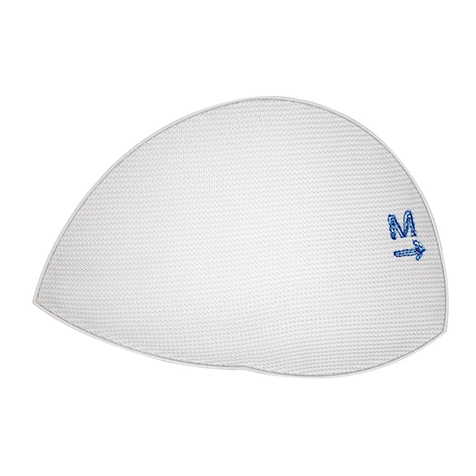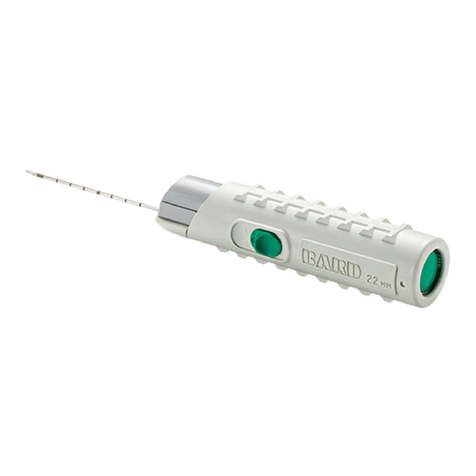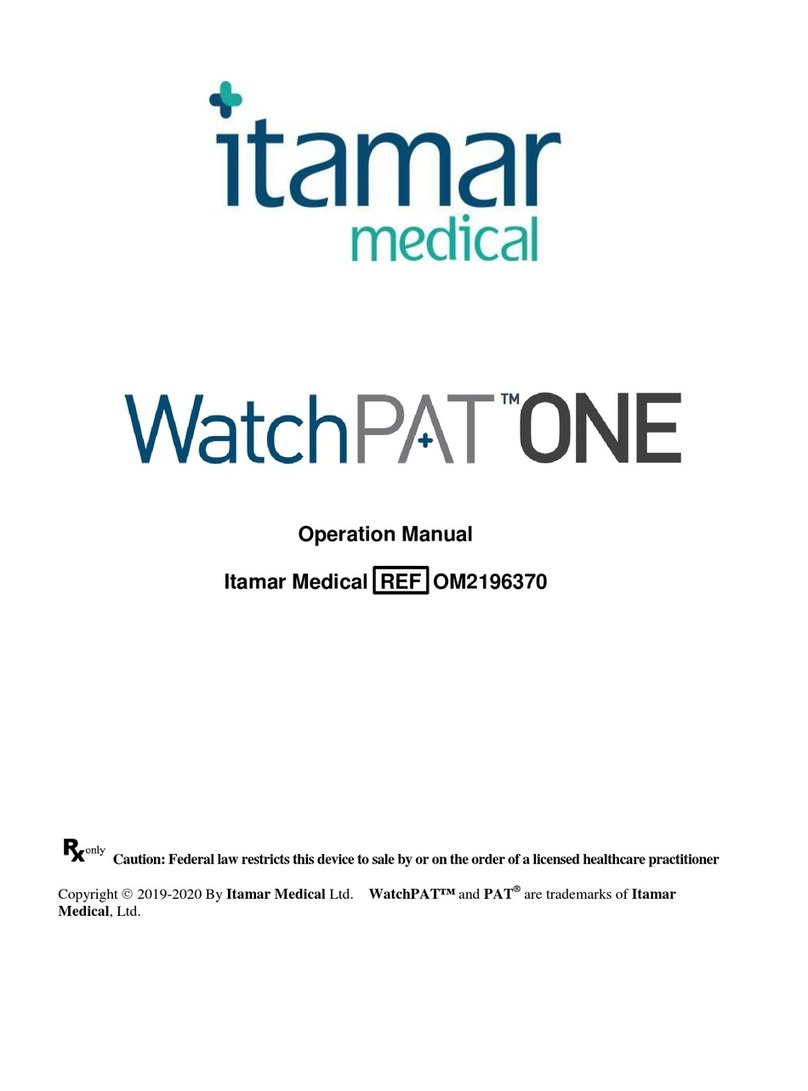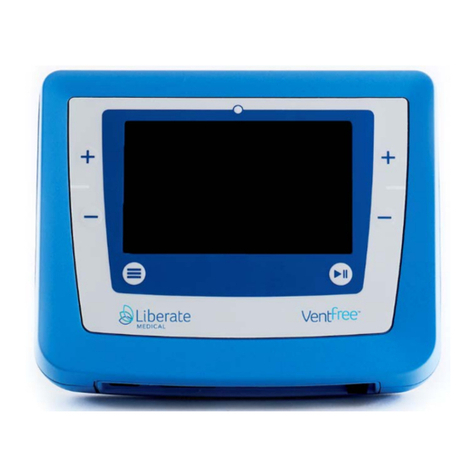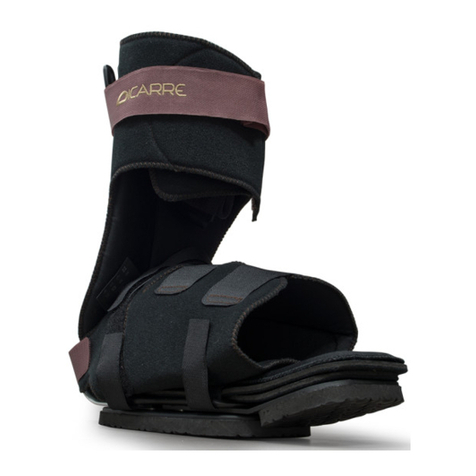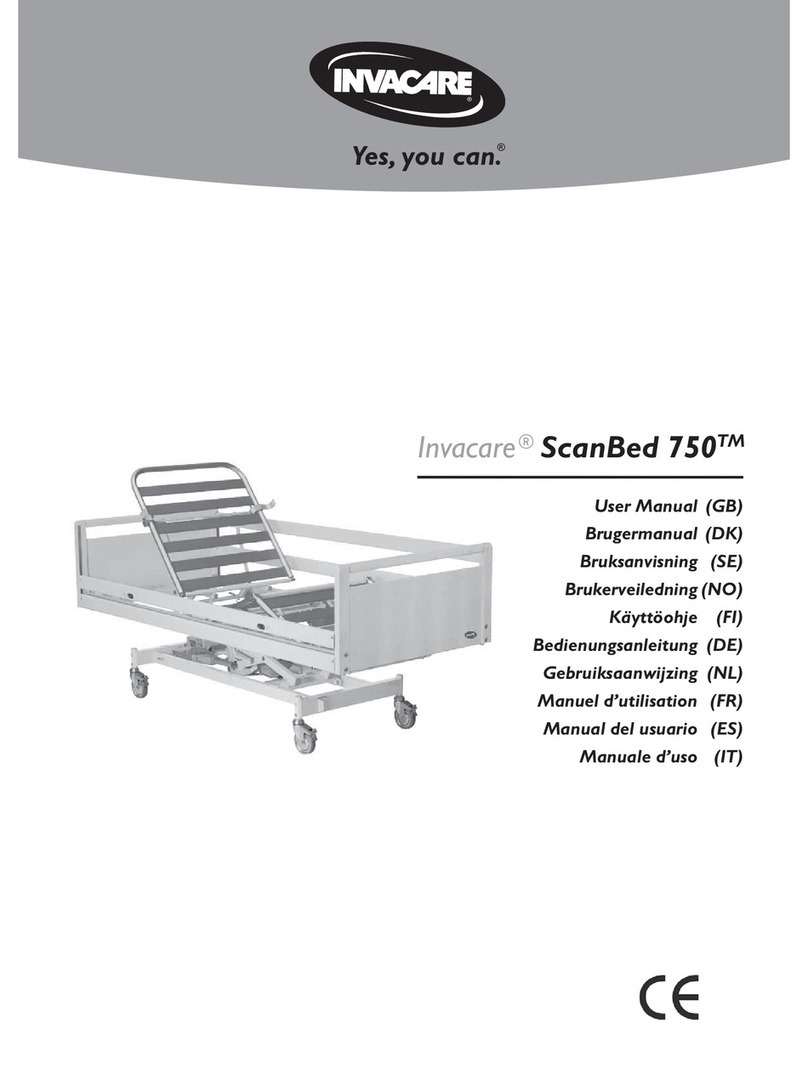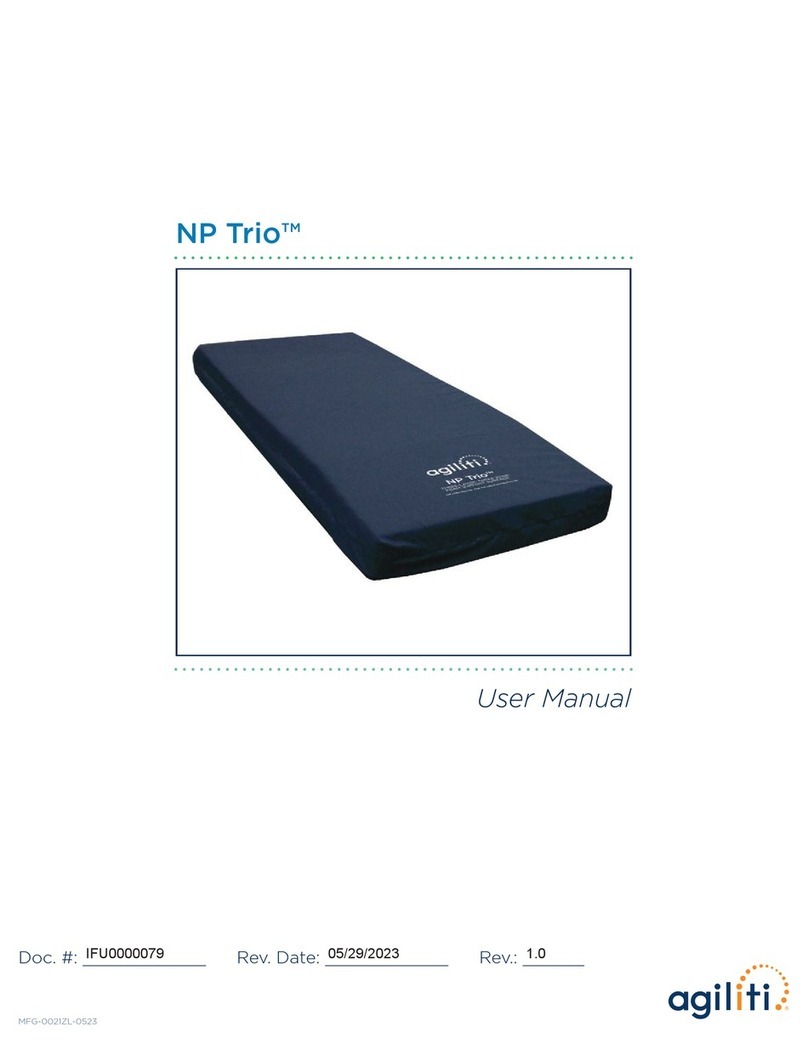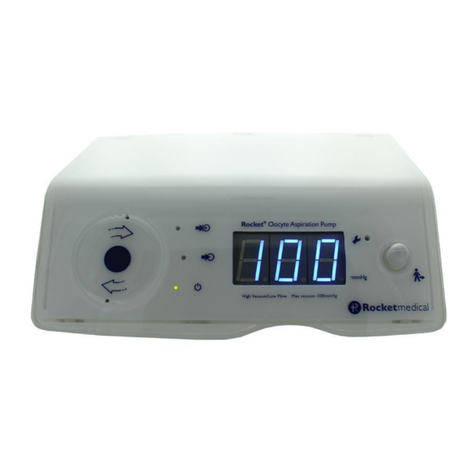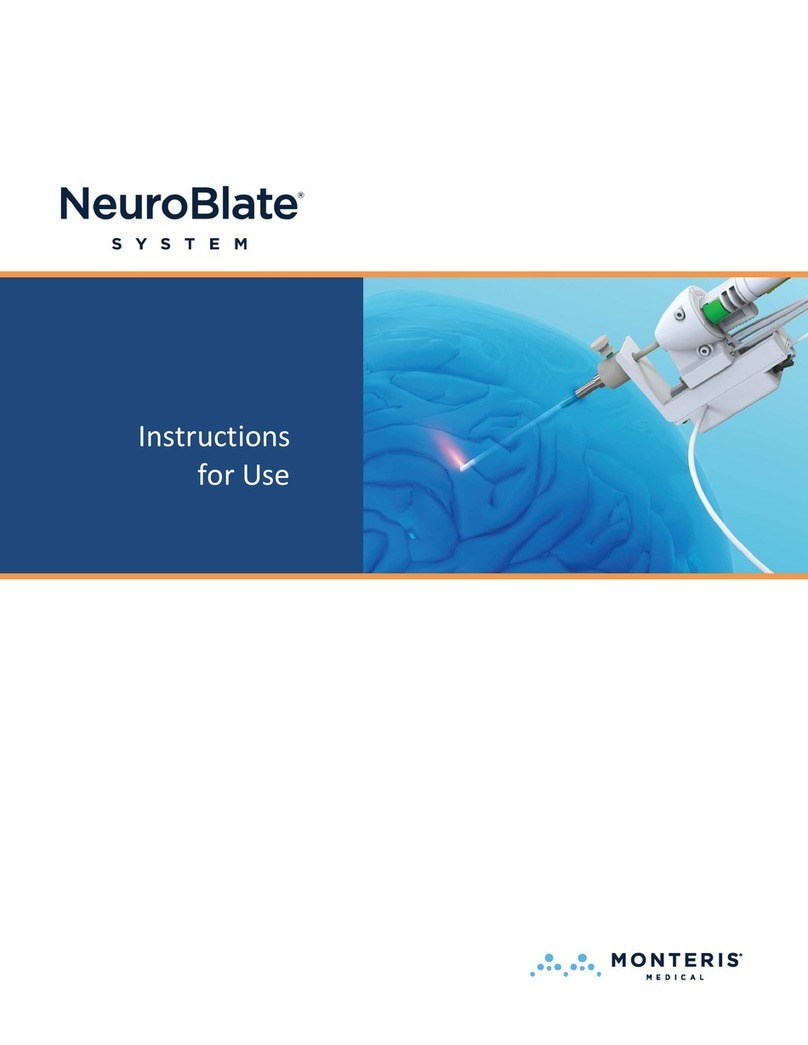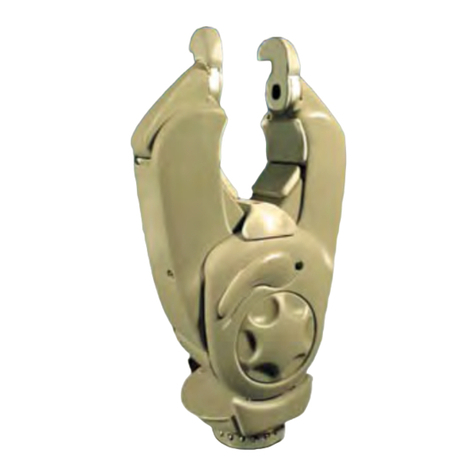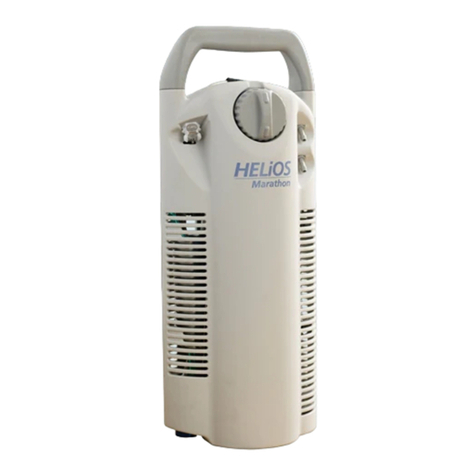
2
procedure to ensure complete removal of radioactive materials. The shielding glass
contains lead, and must be disposed of according to local regulations.
Caution: Storage requirements are temperature dependent
Extra care should be taken to avoid exposing the QUICKLINK®cartridges containing
bioabsorbable SOURCELINK™components to excessive heat or moisture. Store
unopened packages at room temperature. Discard open, unused cartridges,
SOURCELINK™Connectors, and SOURCELINK™Spacers.
Do not store bioabsorbable components at temperatures that exceed 40°C.
Caution: Elevated temperatures following loader steam sterilization
After sterilization, allow the QUICKLINK®Delivery System loader components to cool to
room temperature prior to use.
Caution: Avoid damaging the system or using damaged materials
Never use visibly damaged, bent or broken QUICKLINK®Delivery System loaders,
cartridges or components. This may cause system damage or jamming.
Do not force cartridges into the carriage slots. The slots are keyed to accept the
appropriate cartridges, and minimal effort is required to properly seat the cartridges.
When handling this or any other synthetic absorbable material, care should be taken
to prevent any damage to the material. Avoid crushing or crimping damage to the cup
ends caused by the application of forceps or tweezers.
Ensure the needle adapter and stylet are finger-tight. Do not make any other
adjustments to the QUICKLINK®Delivery System.
Do not tamper with the mechanisms that reside beneath the carriage when removing
the carriage from the loader. These components are aligned to rigid specifications,
and must be handled carefully to maintain proper loader functionality.
In the event the QUICKLINK®Loader or cartridges become inoperable due to damage
or malfunction, any or all components may be removed from the cartridges and
implanted manually.
Do not adjust the indicator in the cartridge when the cartridge is loaded. The indicator
provides a spring bias to the components to allow for dispensing in the loader, and lifting
the indicator and allowing it to snap closed can damage the components and cartridge.
Do not re-sterilize SOURCELINK™Connectors or SOURCELINK™Spacers either loose or
in cartridges. The components are supplied sterile and indicated for single use. If
desired, radioactive seeds may be removed from a cartridge and re-sterilized. Do not
re-sterilize QUICKLINK®cartridges.
Caution: Limitations on use
The QUICKLINK®Delivery System is prescription use only. Users should be familiar with
procedures and techniques involving absorbable spacers and seed train products before
using the SOURCELINK™Connectors. SOURCELINK™Connectors are designed to provide
accurate spacing in increments of 0.5cm with typical 4.5mm brachytherapy sources.
Use of SOURCELINK™Connectors with brachytherapy sources of other lengths will result
in atypical spacing.
Caution: Key points for use of the QUICKLINK®Delivery System
Ensure that the compression handle is fully seated to the compression slide before
assembling a seed train.
The gate button must remain depressed until the seed train is completely dispensed
from the loader and the stylet is retracted.
Ensure the lead glass door is closed prior to assembling or dispensing seed trains.
DIRECTIONS FOR USE
1. Remove the protective tab from the bottom of the QUICKLINK®cartridge prior to
use by grasping the cartridge by the cartridge body and pulling the tab out of the
side of the cartridge. To prevent inadvertent dispensing of a component, do not
hold the cartridge body by the green plunger when removing the tab.
2. Insert the cartridges containing seeds, SOURCELINK™Connectors, and
SOURCELINK™Spacers into the carriage. Ensure that the cartridges are fully
seated in the carriage receptacle. The carriage and cartridges are marked as
follows to indicate the correct placement of cartridges as well as the current
selection:
Radioactive implant seed QUICKLINK®Cartridge
5.5mm Standard SOURCELINK™Cartridge
5.0mm Extension SOURCELINK™Cartridge
0.5mm Seed-to-Seed SOURCELINK™Cartridge
SOURCELINK™Spacer Cartridge
3. Retract the compression slide handle to the right until it contacts the rear plate to
seat the slide compression mechanism (if unseated).
4. Attach the implant needle to the QUICKLINK®Delivery System by pushing the
needle hub firmly onto the needle adapter.
5. Move the carriage to select which item to dispense by aligning the indicator with
the symbol indicating the desired item.
Note: The position of the Extension SOURCELINK™Connector in the cartridge is
accurately represented by the icon. Therefore, when spacing at either end
of a seed train is desired, an Extension SOURCELINK™Connector may
only be used at the leading end of the train. Spacing at the trailing end of
the train must be provided by one or more spacers.
6. Push the dispense button to dispense and move the selected item into the
assembly track.
Note: During normal operation, the dispense button will return to the “up” position
after a component is dispensed. If a cartridge is empty, the button will come
to a stop before it reaches the bottom of its range of motion. Further
pressing will cause the button to release from its internal mechanism to
prevent damage to the cartridge. The button may be lifted to the “up”
position to reseat it to the internal mechanism, and the empty cartridge may
be removed and replaced.
Note: The dispense mechanism is designed to completely dispense a single
component once depressed. The button must be pressed through its
complete range of motion – if the button is only pressed partially down, it
will remain in the midrange position and prevent carriage motion or further
dispensing. Complete the compression of the button to dispense the
selected component and release the carriage for further dispensing.
7. Repeat items 4-5 until all items necessary to build the predetermined seed train
have been dispensed.
8. Visually inspect the dispensed components, if desired, through the lead glass door
prior to assembly of the seed train. Incorrect components can be removed as
necessary by opening the lead glass door to access the assembly track.
Note: If desired, the carriage mechanism may be removed from the loader to
inspect the area beneath the carriage. To remove the carriage, depress the
carriage release button while lifting the carriage upward. To replace, align
the two latch prongs on the underside of the carriage with the
corresponding receptacles in the loader and snap the carriage into place.
9. Move the carriage to the arrow symbol indicating that the QUICKLINK®Delivery
System is ready to either compress or dispense a seed train.
10. Move the handle on the releasable slide left towards the carriage to compress the
seed train. Continue motion in this direction until the slide handle releases and
comes to a full stop.
11. Retract the slide to the right until it contacts the rear plate to seat the slide
compression mechanism.
12. The assembled seed train may be inspected through the lead glass door, and
proper seed spacing confirmed using the assembly base ruler.
13. Move the handle on the releasable slide left again towards the carriage while
holding the gate button down in order to dispense the seed train through the
needle adapter.
14. Retract the handle of the releasable slide fully to the right.
15. Remove the loaded implant needle by pulling the needle hub away from the needle
adapter.
TROUBLESHOOTING
Condition: SOURCELINK™Connectors not connected after compression
Ensure compression slide has been fully reset before compression;
Stylet bent – replace;
The seed train is incorrectly built consisting of either two female or two male
ends placed adjacent to each other;
Ensure the SOURCELINK™Connector material is not damaged preventing
compression.
Condition: SOURCELINK™Connectors are ejected from the loader during
compression
Ensure the lead glass cover is securely closed;
Do not press the gate button during compression, allowing ejection of unlinked
components through the needle adapter.
Condition: Pushing the dispense button does not eject any items or
produces a partial dispense
Ensure that the handle is not being pulled while the dispense button is being
depressed. Pulling on the handle during dispensing can cause the cartridge
to become misaligned with the dispense track, resulting in a lock out or a jam;
Ensure the selected cartridge is fully seated in the corresponding carriage
receptacle;
Remove cartridge from carriage and reinsert back into the carriage;
Ensure the dispense blade is not jammed - remove the carriage and inspect
dispense blade, verify there are no loose components;
The selected cartridge is empty - replace with a full cartridge;
The dispense button is not fully depressed - press button fully;
If cartridge does not dispense following troubleshooting, replace cartridge.
Condition: The assembled seed train cannot be loaded into the attached
implant needle
Ensure that you hold the gate button down while sliding the releasable slide.
Ensure the seed train has been properly built and does not include damaged
components
Condition: Implant needle does not stay attached to the needle adapter
Ensure needle adapter is appropriate for the implant needle used.
Condition: Completed seed train does not load smoothly into the attached
implant needle.
Ensure needle adapter is appropriate for the implant needle used.

